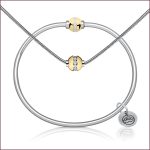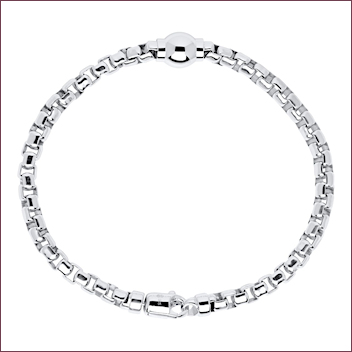Gold Fever
Gold fever is rampant, as a broad spectrum of jewelry makers—from bespoke designers to mass manufacturers—are singing the praises of this precious metal. U.S. jewelry demand remains on an upswing.
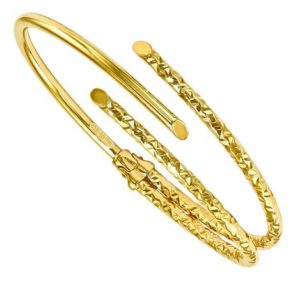 “The U.S. continues a slow, steady engine for jewelry demand, posting another small (2%) year-on-year increase,” cites the World Gold Council Q2 2015 report. “Consumers were encouraged by lower prices, verified by an 11% year-on-year rise in gold jewelry imports for April and May. The rolling four-quarter total of U.S. jewelry demand reached 117.6t, its highest level since Q3 2011, as the market extended its uptrend. The slightly erratic nature of the U.S. economic recovery has proved a headwind to more convincing growth, but we expect recovery in demand to gain momentum as yet lower prices feed through to consumers.”
“The U.S. continues a slow, steady engine for jewelry demand, posting another small (2%) year-on-year increase,” cites the World Gold Council Q2 2015 report. “Consumers were encouraged by lower prices, verified by an 11% year-on-year rise in gold jewelry imports for April and May. The rolling four-quarter total of U.S. jewelry demand reached 117.6t, its highest level since Q3 2011, as the market extended its uptrend. The slightly erratic nature of the U.S. economic recovery has proved a headwind to more convincing growth, but we expect recovery in demand to gain momentum as yet lower prices feed through to consumers.”
This expectation, WGC reports, is backed by comments from the National Retail Federation’s chief economist, Jack Kleinhenz, who foresees improvements in retail sales, supported by a healthy labor market, improving housing market, and easier access to consumer credit.
“Yellow gold is surging. We couldn’t be any further from the place we were post 2008,” hails Jamie Carwell Gage with lovegold.com, a digital platform to promote gold jewelry, partly owned by WGC. “There’s amazing innovation in design, and lower gold prices and affordable prices of certain gemstones make it easier to work with this coveted precious metal. People want to design in gold; it’s evergreen in its mystique in jewelry.”
Gold Rush
2015-16 runway trends show a strong fascination with gold in fabric, embellishment and accessories—namely jewelry. AkzoNobel, in its influential annual global study of color trends, declared gold color of the year for 2016. An appropriate color for an Olympic year, gold exemplifies duality, hails Amsterdam-based design and color experts. “It’s bright enough to attract attention, while subtly referring to history and heritage. It represents a fusion of past, present and future,” tells Heleen van Gent, of AkzoNobel’s Global Aesthetic Center.
Demand for yellow gold remains strong. Gold was prominent in many runway shows this fall including Dolce-Gabbana and Prada, shares Cora-Lee Colaizzi, director of marketing and catalogs and senior merchandiser Quality Gold, Fairfield, Ohio. “The fashion industry is showing yellow metal and that will translate into continued interest at the jewelry counter.”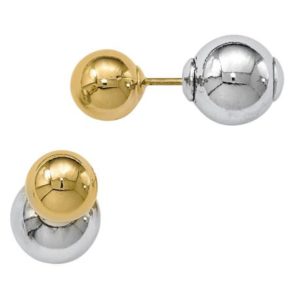
Prices in 2015 have fluctuated between $1,083 and $1,298 an ounce, with prices averaging around $1,185 per ounce. “This is more attractive than in previous years,” says Colaizzi, who notes that its Leslie brand has more than 500 new introductions this year, with the majority made in Italy and in yellow gold. Among its bestsellers are 14K two-tone front and back earrings, fancy textured bangles, and Y-drop and diamond-cut necklace styles.
Women’s Wear Daily proclaimed gold the big trend on spring runways, citing one of the hippest ways to wear it is in a “grand, sweeping gesture” in dramatic designs including sculptural cuffs, articulate big necklaces and industrial-chic collars. Gold jewelry also dominated trends cited in Vogue like double chain earrings at Dior, fringe bracelets at Nina Ricci, hoop bell earrings at Céline and multi-hoops of graduating size at Donna Karan, structured cuffs at Louis Vuitton, layered sautoires at Cloé; geometric bib necklaces at Giambattista Valli, chunky chains ala ‘80s at Moschino, and initial rings at Versace, Zadig and Voltaire.
“One of the leading trends we’re also noticing is for gold chokers that open at the front, a nod to the ‘80s, but more delicate and sleek, less metal, more affordable, asymmetrical and often with gems at the ends,” tells Gage. “We’re also seeing more bangles in this style, open and capped with gems or initials.”
But Gage, cites the top trend in gold: layering. “People love wearing their jewelry and multiple pieces at once. Wearing multiple earrings is popular, as multiple ear piercings have become mainstream, and so has wearing many rings. These new categories are taking off with ear climbers and cuffs and different takes on rings like midi, knuckle buster, cigar band, and two and three-finger styles.”
Gold Standard
Gold has been gaining strength for the past 18 months to two years, with 14K and yellow gold key, reports Mark Hanna, CMO of the Richline Group, New York. “It has been an upward trend. Our gold business has rebounded to pre-recession levels, but we’ve been pushing continuity of our karat gold program since 2008.”
 As consumers returned to gold, demand has been strong for the classics—style staples like studs, hoops and chain. “It has been six to seven years since the price of gold went sky high and the recession hit, and enough time has passed that consumers are revisiting the forever styles,” says Hanna. “Now that it’s affordable again, consumers are back to gold jewelry they wear everyday.” But he cites collections that have a unique story/point of view as most successful like its teeny tiny collection of solid cast charm and pendant, necklaces that are “small in size but big in style” featuring iconic motifs like star, heart, infinity, bow, crown, fleur-de-lis, horseshoe, wishbone, cross, and flowers, animals and initials.
As consumers returned to gold, demand has been strong for the classics—style staples like studs, hoops and chain. “It has been six to seven years since the price of gold went sky high and the recession hit, and enough time has passed that consumers are revisiting the forever styles,” says Hanna. “Now that it’s affordable again, consumers are back to gold jewelry they wear everyday.” But he cites collections that have a unique story/point of view as most successful like its teeny tiny collection of solid cast charm and pendant, necklaces that are “small in size but big in style” featuring iconic motifs like star, heart, infinity, bow, crown, fleur-de-lis, horseshoe, wishbone, cross, and flowers, animals and initials.
While demand for classic gold styles came back fast, fashion has taken a bit longer to resonate with retailers, says Michael Schechter, digital marketing/PR manager for Richline. “It’s always easier for customers to take higher fashion risks in more affordable metals, however we’re starting to see a clear demand for this kind of fashion in karat gold.”
Strike Gold
Storytelling is king when marketing jewelry, especially gold. “In a world so communicative with social media, if you don’t have a story and can’t lend meaning to your products, you’re selling a naked commodity,” says Hanna. He cites Richline’s May is Gold Month campaign, celebrating its 11th year, as a way to get in on the buzz. “It’s not just for our customers, but any retailer willing to follow the promotional guidelines (mayisgoldmonth.com). “With the bigger retailers picking it up, everyone is talking about gold in a national conversation.”
Gage advocates jewelers get in on the conversation by highlighting products they already have and new ways of thinking about them, like promoting the trend for layering. Show customers how to stack rings, wear multiple studs and hoops, and mix chain necklaces of different 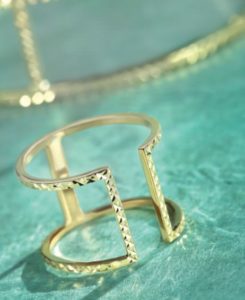 sizes and styles. She notes that millennials are interested in new earring and ring treatments, advising retailers offer a selection of trendy styles. Midi rings are a great way to easily introduce a trend—just a small band starting around size 1 ½ and worn at the top of the finger above the knuckle. It’s not a high content of gold, not too out there, and not too pricey.
sizes and styles. She notes that millennials are interested in new earring and ring treatments, advising retailers offer a selection of trendy styles. Midi rings are a great way to easily introduce a trend—just a small band starting around size 1 ½ and worn at the top of the finger above the knuckle. It’s not a high content of gold, not too out there, and not too pricey.
“Gold jewelry is a great way to express personal style. Go on social media and you’ll see in real time what people like and are responding to. There’s no wrong way to do it, and you can always improve. It’s a platform to have real time conversations with your customers.” She advocates jewelers use #LoveGold as part of their outreach. She also suggests they emphasize the investment value of gold. “Don’t be afraid to compare gold jewelry to other accessories like handbags and shoes that don’t have the lasting value that gold does.”

